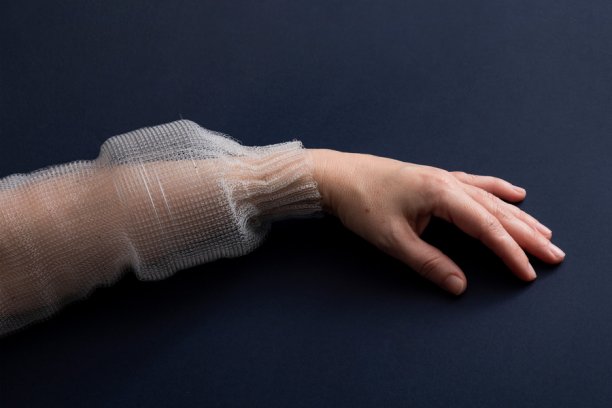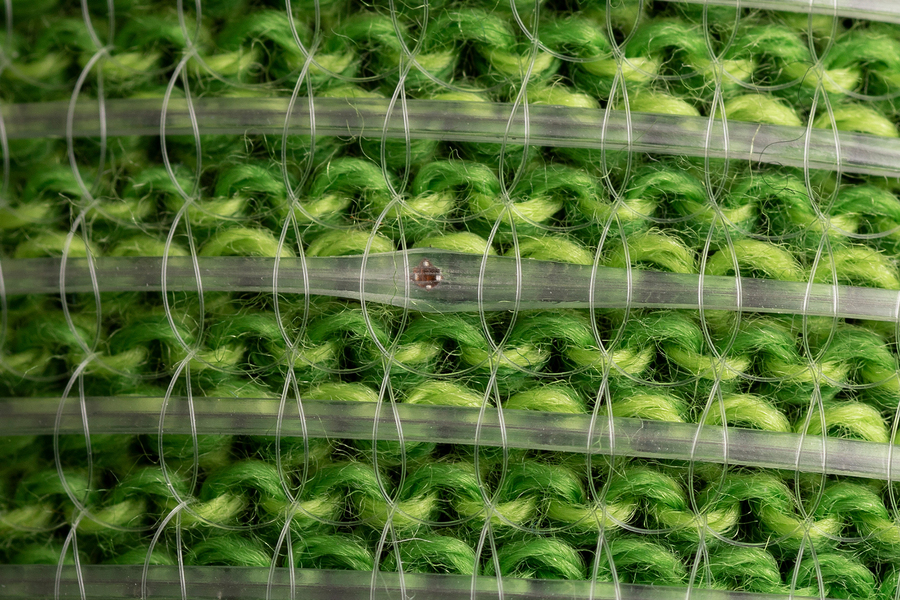
UK milestone for Made Smarter
Discrete information can now be encoded and processed in 0s and 1s.

10th June 2021
Innovation in Textiles
|
Cambridge, Massachusetts
The first fibre that is able to digitally sense, store and then analyse activity after being sewn into a shirt has been developed at the Research Laboratory of Electronics at MIT (Massachusetts Institute of Technology).
Yoel Fink, head of the lab, says digital fibres expand the possibilities for fabrics to uncover the context of hidden patterns in the human body that could be used for physical performance monitoring, medical inference, and early disease detection.
Until now, electronic fibres have been analog – carrying a continuous electrical signal – rather than digital, where discrete bits of information can be encoded and processed in 0s and 1s.
Within the fibre memory is a neural network of 1,650 connections
“This work presents the first realisation of a fabric with the ability to store and process data digitally, adding a new information content dimension to textiles and allowing fabrics to be programmed literally,” Fink says.
The new fibre was created by placing hundreds of square silicon microscale digital chips into a preform that was then used to create a polymer fibre. By precisely controlling the polymer flow, the researchers were able to create a fibre with continuous electrical connection between the chips over a length of tens of metres.
The fibre itself is thin and flexible and can be passed through a needle, sewn into fabrics, and washed at least ten times without breaking down.
“Making a digital fibre opens up different areas of opportunities and actually solves some of the problems of functional fibres,” says MIT PhD student Gabriel Loke. “For instance, it offers a way to control individual elements within a fibre, from one point at the fibre’s end. You can think of our fibre as a corridor, and the elements are like rooms, and they each have their own unique digital room numbers.”
The research team devised a digital addressing method that allows them to “switch on” the functionality of one element without turning on all the elements.

A digital fibre can also store a lot of information in memory. The researchers were able to write, store, and read information on the fibre, including a 767-kilobit full-colour short movie file and a 0.48 megabyte music file. The files can be stored for two months without power.
Fink notes that the research at MIT was in close collaboration with the textile department at the Rhode Island School of Design (RISD) where the digital fibres were incorporated into a knitted garment sleeve, paving the way to creating the first digital garment.
On-body artificial intelligence
The fibre also takes a few steps forward into artificial intelligence by including, within the fibre memory, a neural network of 1,650 connections. After sewing it around the armpit of a shirt, the researchers used the fibre to collect 270 minutes of surface body temperature data from a person wearing the shirt, and analyse how this data corresponded to different physical activities. Trained on the data, the fibre was able to determine with 96% accuracy what activity the person wearing it was engaged in.
Adding an AI component to the fibre further increases its possibilities, the researchers say.
“Fabrics with digital components can collect a lot of information across the body over time, and this data is perfect for machine learning algorithms,” Loke says. “This type of fabric could give quantity and quality open-source data for extracting out new body patterns that we did not know about before.”
With this analytic power, the fibres someday could sense and alert people in real-time to health changes such as a respiratory decline or an irregular heartbeat, or deliver muscle activation or heart rate data to athletes during training.
The fibre is controlled by a small external device, so the next step will be to design a new chip as a microcontroller that can be connected within the fibre itself.

Business intelligence for the fibre, textiles and apparel industries: technologies, innovations, markets, investments, trade policy, sourcing, strategy...
Find out more